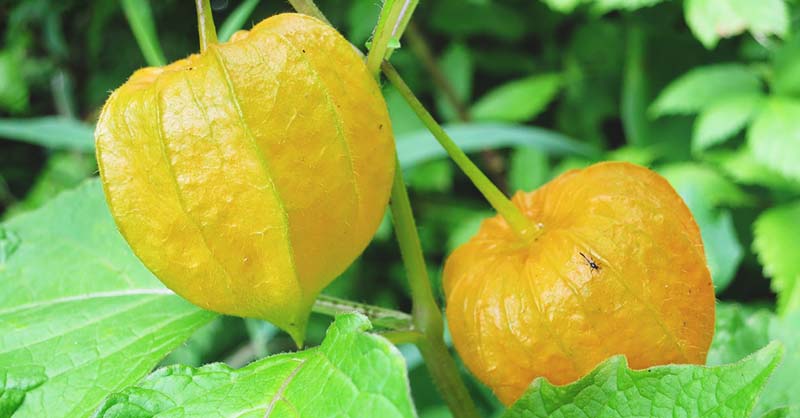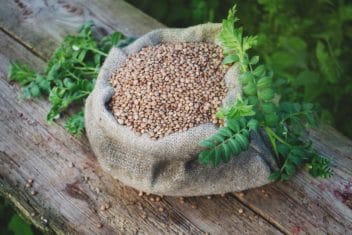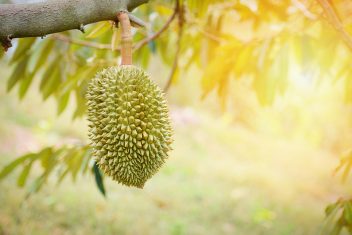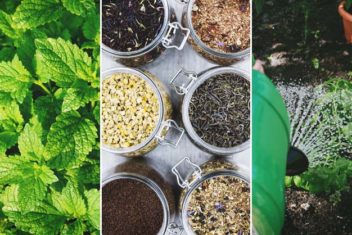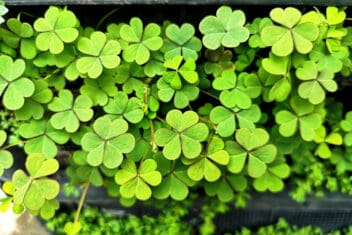Never heard of ground cherries? Honestly, I never had either until I ventured to a festival hosted by the Pittsburgh Botanical Gardens. One of the many vendors were selling organic ground cherry seedlings, so I grabbed a few. Vegetable gardening is an addiction, folks.
I went home and researched my new plant, discovering quite quickly that ground cherries are a gem. Ground cherries (Physalis species) are also called cape gooseberries, husk tomatoes, and sweet tomatillos. While the various varieties have different flavors, I’ve found that they’re a blend of pineapples, citrus, and strawberries. The taste is unique and delicious.
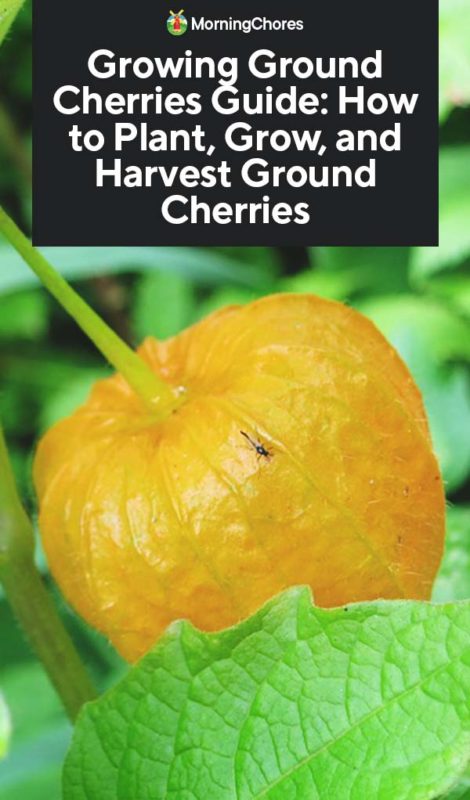
Ground Cherries Varieties
All ground cherries fall under the Physalis species because every variety loosely holds their fruit in a papery husk. Tomatillos are in this family as well.
- Aunt Molly’s Ground Cherry – This kind takes about 65 days to grow. It’s a Polish heirloom variety, and it’s one that I have in
my garden. The fruits are 1/2-inch to 3/4-inch in size, and they drop to the ground when ripe. Aunt Molly has high pectin amounts, so it’s ideal for preserves or pies.
- Strawberry Husk Tomato Ground Cherry – This type ripens in about 70 days and is known for having huge yields. It’s the variety that was used by early settlers in the U.S. Perfect in pies, jams, and more.
- Goldie Ground Cherry –This variety takes around 75 days to mature. They’re sweet tasting berries that grow on bushes about 2.5’-3’ tall.
How to Grow Ground Cherries
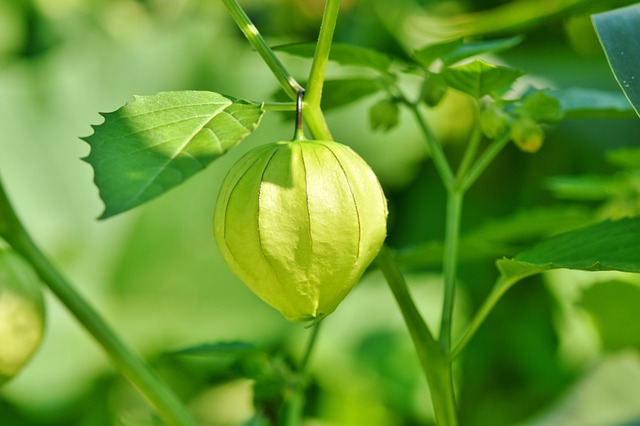
Sun and Temperature Requirements
Growing ground cherries is similar to tomatoes. They don’t love frost, so you need to start your seeds indoors or buy transplants to put outside once the danger of frost passes. Ground cherries grow well in USDA Hardiness Zones 4 and higher. You can grow ground cherries as perennials in zone 8 and higher.
Starting Seeds Indoors
Growing ground cherries from seeds is similar to growing tomatoes, so if you’ve started the latter indoors, you’ll be golden. Start the seeds indoors 6-8 weeks before the last spring frost date in your area.
Ground cherries tend to take time to germinate, so you have to be patient. On average, it takes 7-14 days to germinate at 65℉. Once planted outside, you can expect to start harvesting 60-70 days after transplanting.
When I purchased my first ground cherries plants, I didn’t realize they were such prolific growers. One plant can produce up to 300 fruits, continuing from maturity until the first frost. Four to six plants are plenty for an average-sized family, so remember that when you start seedlings.
Soil Requirements
Ground cherries aren’t particularly picky about their soil, but they do require a well-draining location. L
Add some compost to your soil to help let water drain out. Ground cherries like humus-rich soil to create an abundant crop.
To prepare for planting, cover your garden bed with a 2-inch layer of compost in the spring. Add a balanced fertilizer, such as a 10-10-10 blend with a rate of 1 1/2 lbs per 25 square feet. Use a tiller to mix the compost and fertilizer into the top 8-inches of soil.
Sun Requirements
The ideal location for growing ground cherries is in full sun. However, they can tolerate a bit of shade, but they need a lot of sunlight to grow properly. You can put them in garden beds, raised beds, or containers.
Transplanting Outside
When the threat of frost passes, harden off your seedlings in preparation to plant outside for about a week.
You may have to wait for 2-4 weeks after the last frost date to ensure the temperatures are right. They should be consistently in the mid-60s at night.
Spacing
Plant ground cherry seedlings 18-24 inches apart. The plants will eventually be 2-3 feet tall and bushy, so they need space to grow. Ground cherries can be up to 2 feet wide. They self-pollinate, so you only need one plant to have a harvest.
Planting in the Ground
Dig your holes the same depth as the pot your seedlings are in and twice as wide. Spread the roots out and lay them in the hole. Fill the hole back in with dirt. Water deeply after you plant the ground cherries in the ground.
Growing Ground Cherries in Pots
Ground cherries grow well in containers, just like tomatoes. You want to make sure the pots are at least 8-inches deep to encourage proper root system development.
If you want to use containers, add potting soil with compost or peat moss. Make a hole the same depth as the transplant pot, but twice as wide. Water deeply.
Make sure the pot has drainage holes and keep the pot in a spot that receives plenty of sunlight. A sunny corner on your patio is ideal!
Expect Volunteer Plants
Since ground cherries drop to the ground, they’re prolific self-seeders. Expect to find volunteer plants the following season. As a result, starting ground cherries pretty easy. You can thin them and leave a few in place, or you can dig them up to share with friends and family.
If you don’t want volunteer plants, grow them in containers on a wooden, stone, or concrete patio. Doing so helps to reduce self-seeding.
How to Care for Ground Cherries
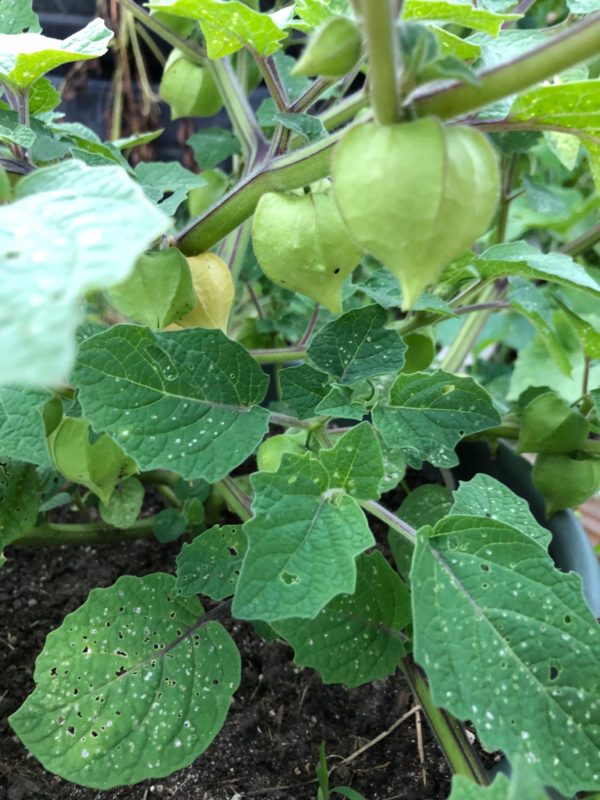
One of the reasons I love growing ground cherries is that they’re fuss-free, considering they’re a fruit. You don’t have to cage or stake them unless you want. Some gardeners stake theirs to keep the branches off the ground.
Watering Needs
You don’t need to soak the plants, but make sure to give ground cherries at least 1-2 inches of water each week. Dry conditions won’t kill the plants, but they’ll wilt and stop fruiting. These plants are notorious for their massive yields, but they’ll stop producing when facing drought.
Fertilizing
You can fertilize ground cherries the same way that you fertilize tomato plants. They do prefer acid and composted manures. The ideal soil pH level is 6.0-6.8. Make sure you don’t add too much nitrogen because it can cause fruit production to dramatically decrease.
Mulching
Adding some mulch around your ground cherries is helpful. You can use straw or grass clippings. Both help to maintain proper soil moisture, and they’ll make it easier to collect fallen ground cherries.
Mulching also helps to suppress the weeds, which can reduce air circulation in
Common Pests and Diseases for Ground Cherries
Luckily, ground cherries, unlike tomatoes, don’t have many issues with pests or diseases, but you might encounter a few.
Cutworms
One problem you might encounter is cutworms. They’ll bother your plant when you first put it in the garden. While there are pesticides that you can use against them, the best method is also an organic one. Place a paper or cardboard collar around the transplant. Push the collar into the soil about an inch or so deep to prevent them from moving.
Spider Mites
Mites like to feed on the underside of plant leaves. It’s best to remove those leaves to avoid the spread, but you can also knock off the mites with a hose.
Verticillium Wilt
Vert is a common fungal disease that bothers tomato and squash crops. It likes warm and wet conditions, and this disease comes in through the roots and goes up the stem.
Keep your growing ground cherries well fed and watered to reduce the effects of the disease. If you notice your plants are coming down with wilt, its best to remove them to stop the spread of the disease. The spores can overwinter on crop debris, so keep your beds
Companions for Ground Cherries
Picking the perfect companion for ground cherries is easy because it grow well near several plants. There are also a few plants you need to keep away from them.
The Best Companions for Ground Cherries
Grow your ground cherries with these plants:
- Basil
- Parsley
- Carrots
- Onions
- Hot Peppers
Worst Companion Plants
- Corn
- Potatoes
- Fennel
- Dill
How to Harvest and Store Ground Cherries
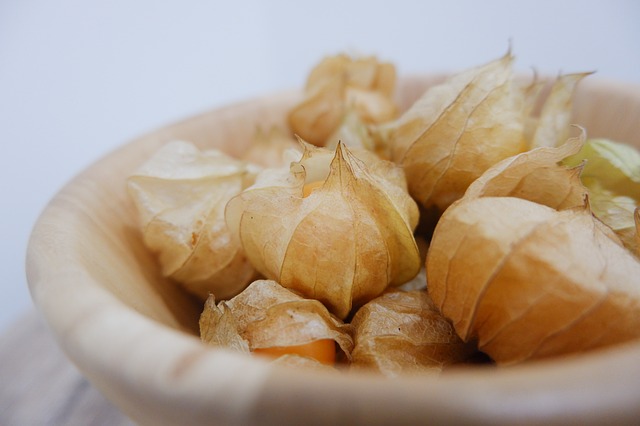
Harvesting ground cherries is ridiculously easy because they often harvest themselves! Ground cherries grow in paper-like husks. When they’re ripe, the husks start to turn brown and papery. Some drop off of the plant on their own, so you
Pick them up off the ground quickly. The berries break down fast, and then you’ll end up with little ground cherry seedlings everywhere.
How to Store Ground Cherries
If you don’t want to eat your ground cherries immediately, store the fruits in their husks in a refrigerator, cool basement, garage, or root cellar. They need to be kept cool for optimal storage. In the right conditions, ground cherries can store from 6 weeks to 3 months.
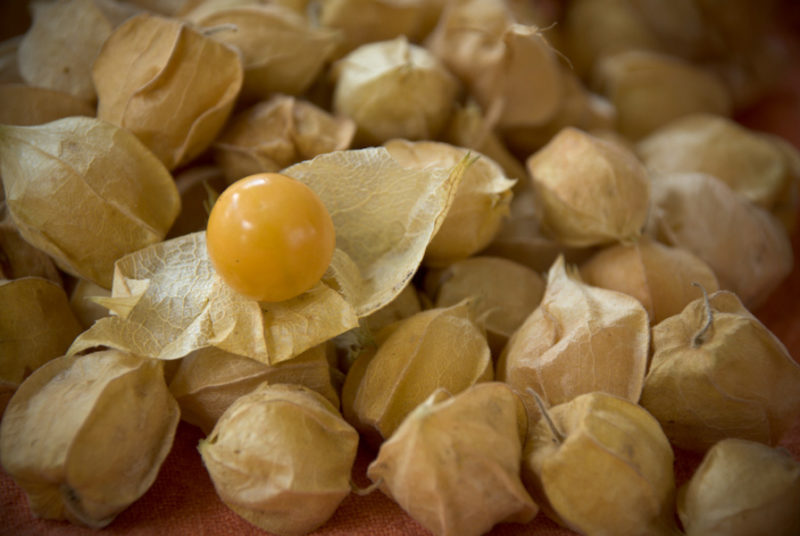
I love to use my ground cherries in jams and pies. You can also freeze them to make jam later, which is what I do as well. I had quite a harvest and made one batch of jam at a time to see what my family thought of the taste.
If you’re going to freeze your ground cherries, try flash freezing. Line a baking sheet with parchment paper and spread the ground cherries over the baking sheet. Put them in the freezer for about 5 hours, then transfer to a freezer-safe bag
The Best Ways to Eat Ground Cherries
You can eat ground cherries fresh right off the plant. I’ve been known to munch on them while working in the garden. They can be addicting.
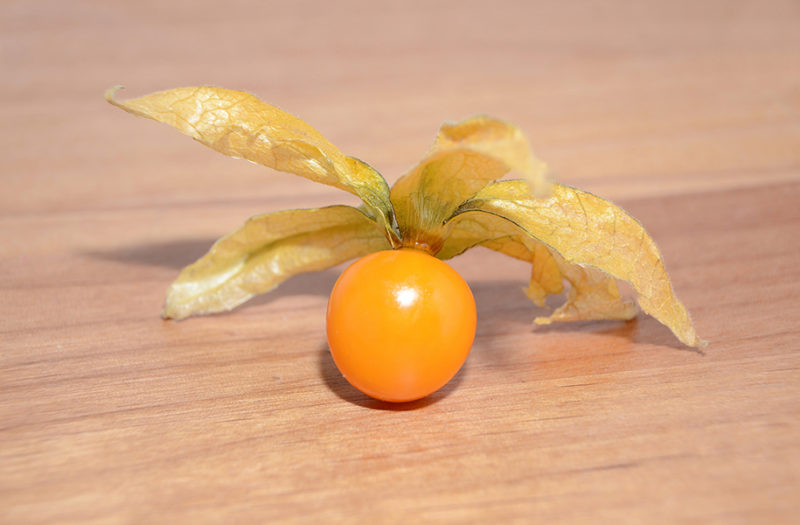
Give ground cherry jam and preserves a try. They make delicious pies and cobblers with some vanilla ice cream – yum. The more savory fruits make a good salsa verde, or you can layer them with tomatoes and buffalo
I was skeptical when I first put one of these plants in my garden. How good could they be? I was pleasantly surprised to find that they’re delicious little treats that are easy to grow.
Have you tried growing ground cherries in your garden? If not, this is the year to give them a try.

